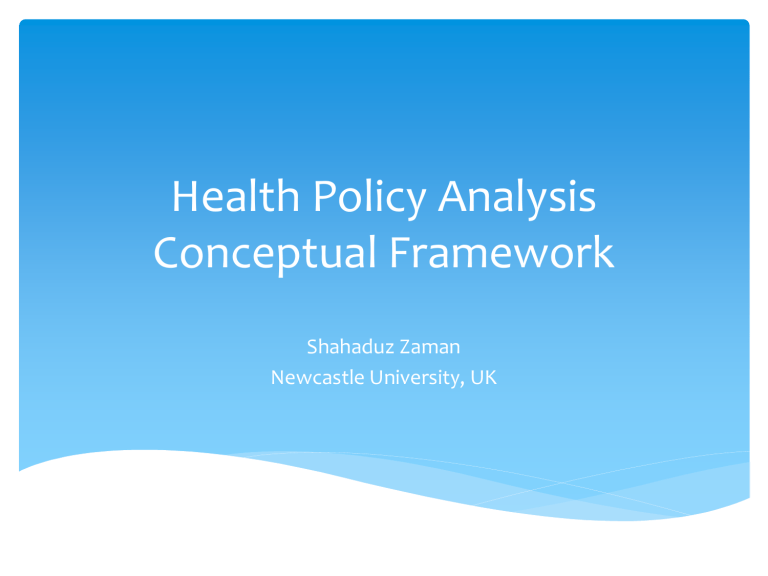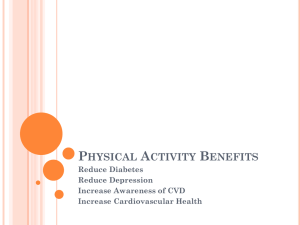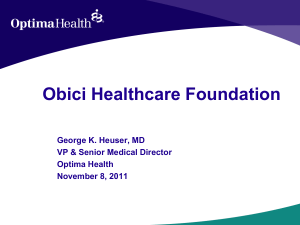
Health Policy Analysis Conceptual Framework Shahaduz Zaman Newcastle University, UK What does a health policy analysis involve? Explains the interaction between Institution Interest Ideas Not just what happened •BUT What explains what happened? We need a conceptual framework for that What is then a conceptual framework? Conceptual frameworks provide a particular perspective, or lens, through which to examine a topic. Frameworks organize inquiry by identifying elements and relationships among elements that needs to be considered for theory building. ( Ostrom 2007) Health policy framework helps to contextualize the ‘health policy environment.’ Three major health policy analysis frameworks Stages framework (Lasswell 1956, Brewer, Deleon 1983) Triangle Framework (Walt, Gilson 1994) Network Framework (Thatcher 1998) •Agenda setting •Formulation •Implementation •Evaluation •Content •Actor •Context •Process •Interactions •Interconnectedness Policy Triangle Framework Content Process Actor Context Policy Documents Research papers Content Guidelines Strategies Public Sector Donor agency People Actors Media Private Sector Insurance Company NGO Political Environm ental Context Cultural Historical How agenda is set? How policies are executed and assessed? Process How policies are communicated ? Who is consulted? An Example of using Policy triangle framework Mediterranean studies of Cardiovascular diseases and Hyperglycaemia: analytical Modelling of Population Socio-economic transitions (MEDCHAMPS) MEDCHAMPS objectives Developing a CVD and diabetes model for use within the project countries, in order to explain trends and predict likely future impact of diseases Defining the national policy context and characterising the health system for developing policy options Situation analysis (1) Translating recommended interventions to different cultural settings Health policies Analysis of: Health services Health beliefs influence Health outcomes Gaps Qualitative data from key stakeholders Barriers Opportunities for implementing change Informs policy options National situation analysis of current policy and health systems context • Objectives: – Using established schematic frameworks of potentially effective policy measures and health system interventions for the prevention of CVD and Type 2 diabetes in order to guide data collection and analysis – Identify, collating and systematically reviewing all relevant documentary materials on policies and health services provision – Exploring perception and knowledge of relevant national policies through interviews with key informant from relevant organisations, including government, the health sector, private sector and non governmental organizations (including patient group) – Exploring health beliefs with potential target groups, and determining whether these differ by population group. Including by gender and socio economic group. Two focuses A. Situation analyses of current policy: National/Regional/District overview B. Health system contexts: Local orientation alongside the national orientation The project therefore envisages appraising existing situations in partner countries on three different levels: Level of conceptualization Level of awareness and commitment Level of practice Level 1: Situation on the level of conceptualization To know how the combating of CVD and diabetes is currently conceptualized in national health policies? What are the policies for treatment and prevention of CVD and diabetes in each country? What are the strategies undertaken to fulfill the policies? What are the types of health sectors functioning in the country and their relative prominence ? Who are the stakeholders/interest groups, and what are their roles? How are CVD and Diabetes prevention and intervention integrated within the wider health care system What is the role of non health sectors in preventing CVD and Diabetes? Source of information • Documentary materials on national policies, strategies, health systems and financing concerning CVD and diabetes, including policy relevant to smoking, diet, physical activity and alcohol use. • Relevant documents on pricing and taxation, agricultural and transport policies. • Documentary materials on policies regarding national and local health service provisions, prescribing , prevention and risk factor management. • National and international guidelines on policy measures and health care structures and interventions developed by WHO, World Bank, World Heart Foundation, International Diabetes Care Interventions. • Method: Document analysis Level 2: Situation on the level of Awareness and Commitment To know whether the implementers and practitioners of health services are aware of and committed to the existing policies and strategies concerning CVD and Diabetes? Are the implementers and practitioners of health informed about existing CVD and Diabetes policies and strategies of their country? What are their views about these policies and strategies? Are they committed to what has been recommended in these policies? Do they have suggestions for acceptable and feasible policy options? Source of information • Implementers and practitioners from: – – – – Government Private sector NGOs at national, regional, provincial Community level • Method: Key informant interviews Level 3: Situation on the level of practice To know how these policies and strategies concerning CVD and Diabetes are practiced in reality, and how practitioners and patients understand these practices? What are people’s experience of living with CVD and Diabetes, and how do they seek and access treatment? What cultural values regarding diet, physical activity, and body size influence these practices? What is the level and quality of CVD and Diabetic care provided in formal or informal medical settings? Source of information – Patients – Care givers, medical practitioners • Accessed through sample of health care facilities in (a) urban and (b) rural settings. • Method : In depth interviews, Illness narratives, Observations. Reference Merson, M., Black, R., Mills, A. (Eds) (2012) Global Health: Diseases, Programs, Systems and Policies. London: Jones & Bartlett Publisher Ostrom, E. (2007) Institutional rational choice: as assessment of the institutional analysis and development framework. In Sabatier PA (ed) Theories of the policy process. Boulder, CO Westview Press pp 21-64. Walt, G. et al. (2008) Doing’ health policy analysis: methodological and conceptual reflections and challenges. Health Policy and Planning 23:308–317


